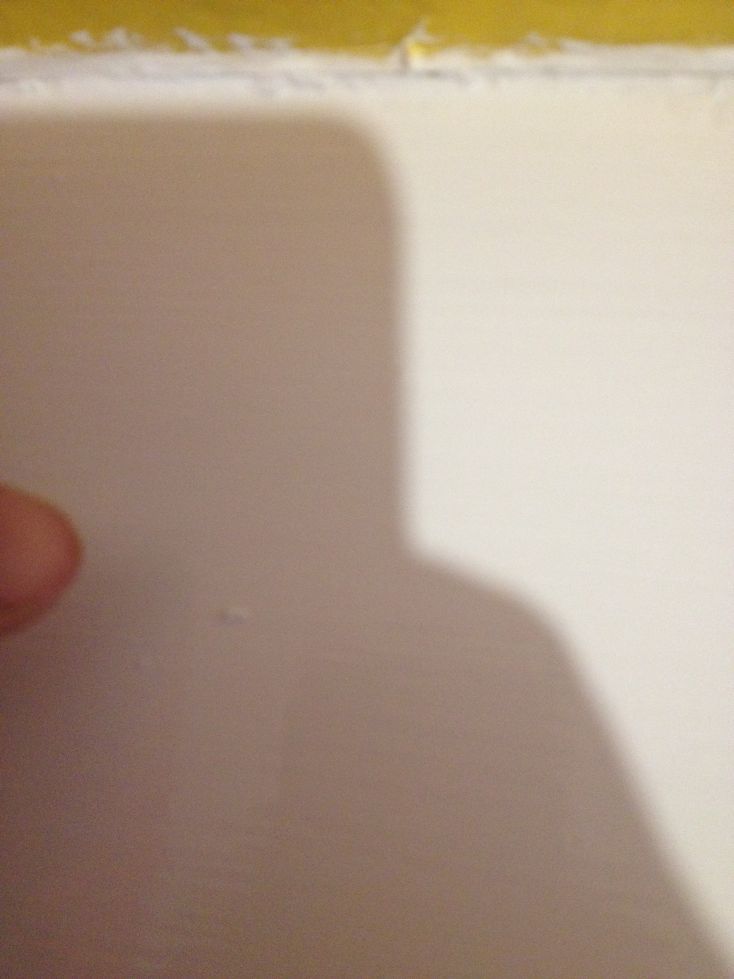- Joined
- 2 Feb 2014
- Messages
- 412
- Reaction score
- 2
- Country

While not a painting pro, i've painted the wallpaper no bother, painted bits for my car no bother but this satin stuff is twisting my melon man!
I bought some Crown undercoat which went on no problem.
Came to do the "Crown non drip satin". I didn't stir it as per instructions.
I've tried a bit on the brush, i've tried a lot on the brush. I've tried straight from the tin, i've tried into a tray mix a bit of water to get it runny, nothing is working for me. Either this is the way satin (or this crown stuff) is, or i'm doing something (don't know what) wrong.
I go down the grain & all is well, the paint turns from jelly like to water like & easy to flow. All is well.
I move alone a brush width but inevitably i cut into where i've just painted. Still all is well.
But then small 'chunks' start to appear at random locations. I try & brush over these but then it only serves to 'lift' the paint & create a poor effect - as though i've just jabbed the paint with the end of the brush bristles.
The only way around this is more paint, which then lifts up more paint which has already started to dry even though it's only been down a minute or two. Not only this but then i get runs at the end of my strokes.
It took me about 20-30 mins to paint a 3ft-x-1ft piece yesterday as getting it even was horrendous.
Am i doing something wrong?
Would Dulux equivalent be any better?

Or would shelling a bit extra for some Dulux Trade Satin be any better - is it any easier to work with?

My biggest gripe is these mini dollops being randomly left behind. It's even happening with a brand spanking new brush today. I could possibly (i say POSSIBLY) get the job done if it wasn't for this.
Have this wood to do, skirting, door frames & probably a glass panel door as well. I'm on the verge of chucking this paint & i've not long opened it. I don't want gloss due to what i've ready about yellowing.
I bought some Crown undercoat which went on no problem.
Came to do the "Crown non drip satin". I didn't stir it as per instructions.
I've tried a bit on the brush, i've tried a lot on the brush. I've tried straight from the tin, i've tried into a tray mix a bit of water to get it runny, nothing is working for me. Either this is the way satin (or this crown stuff) is, or i'm doing something (don't know what) wrong.
I go down the grain & all is well, the paint turns from jelly like to water like & easy to flow. All is well.
I move alone a brush width but inevitably i cut into where i've just painted. Still all is well.
But then small 'chunks' start to appear at random locations. I try & brush over these but then it only serves to 'lift' the paint & create a poor effect - as though i've just jabbed the paint with the end of the brush bristles.
The only way around this is more paint, which then lifts up more paint which has already started to dry even though it's only been down a minute or two. Not only this but then i get runs at the end of my strokes.
It took me about 20-30 mins to paint a 3ft-x-1ft piece yesterday as getting it even was horrendous.
Am i doing something wrong?
Would Dulux equivalent be any better?

Or would shelling a bit extra for some Dulux Trade Satin be any better - is it any easier to work with?

My biggest gripe is these mini dollops being randomly left behind. It's even happening with a brand spanking new brush today. I could possibly (i say POSSIBLY) get the job done if it wasn't for this.
Have this wood to do, skirting, door frames & probably a glass panel door as well. I'm on the verge of chucking this paint & i've not long opened it. I don't want gloss due to what i've ready about yellowing.


